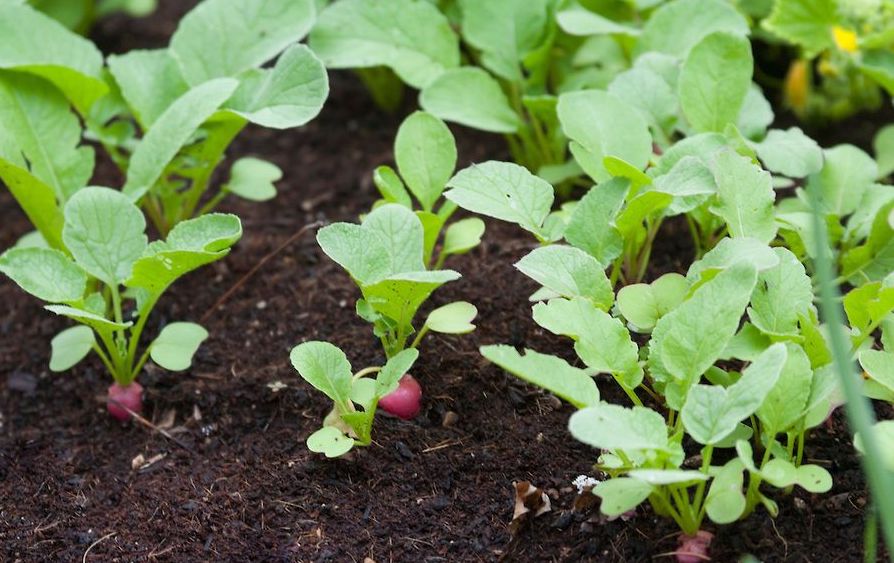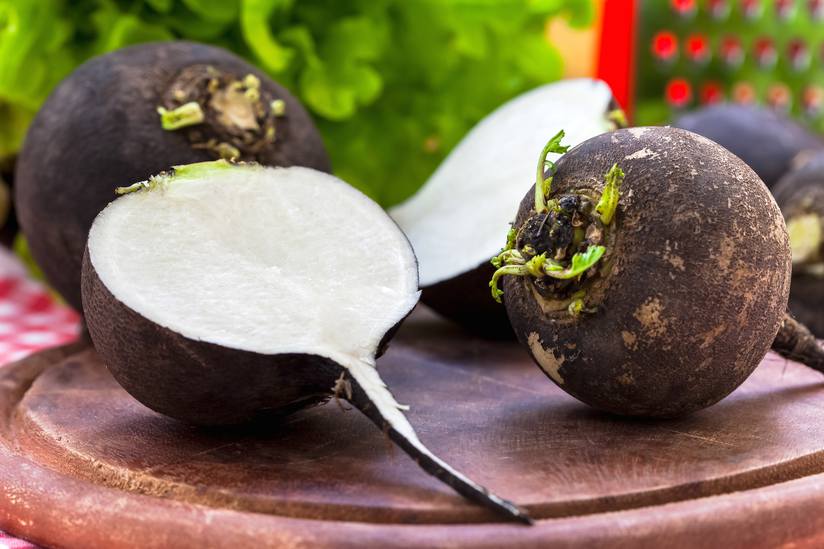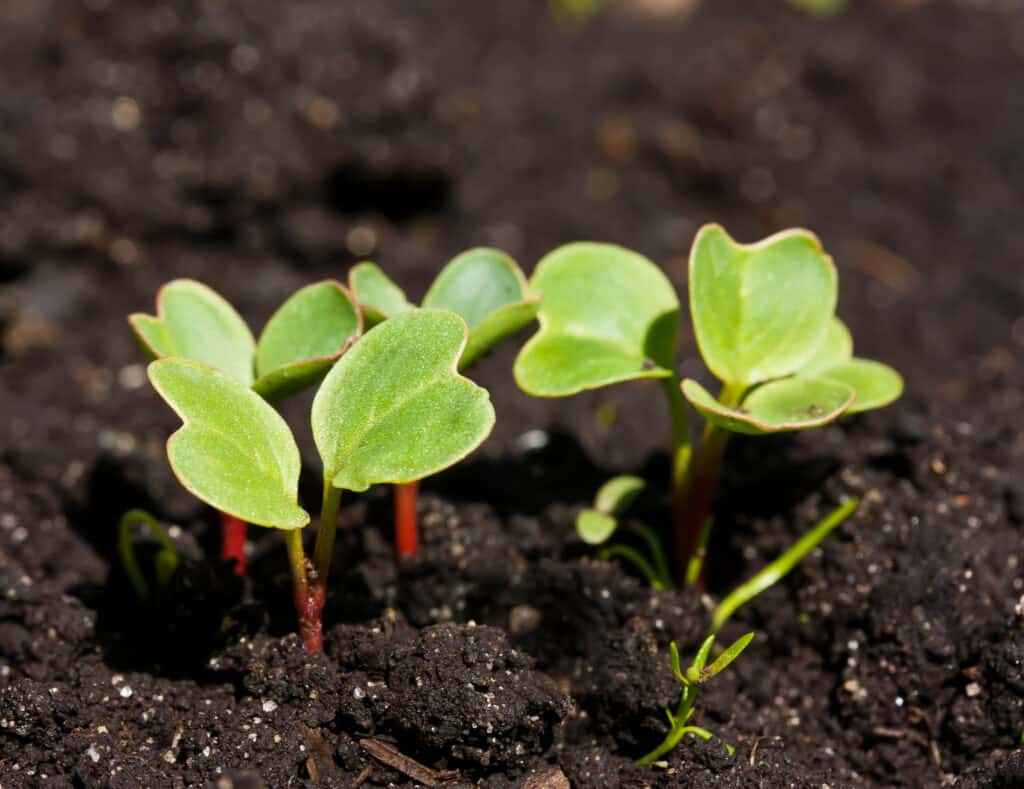Learn to grow microgreens at home, join Grow It Local +
Learn > How To
How to Grow Spanish Radish

Radish is a seasonal vegetable belonging to the Brassicaceae family which includes broccoli, brussl sprouts, cabbage, kale, kohlrabi, wasbi, radish and rocket amongst others. The Latin word for Spanish radish is ‘Raphanus’ which is derived from the Greek word “Rephanos”, meaning ‘easily reared’ aka super easy to grow!
ORIGIN
It is commonly accepted that radishes originated from China thousands of years ago and gradually spread west. They became an important food of ancient Egypt, Greece and Rome.
Radishes were extensively cultivated in Egypt during the time of the Pharaohs and ancient records show that radishes were eaten before the pyramids were built.
Giant radishes were described in Germany in the 13th century and a German botanist reported seeing radishes weighing 100 pounds in 1544. Small radishes were not recorded in Europe and Britain until after the middle of the 16th century, but by 1586, small radishes were commonly enjoyed throughout Europe and Great Britain.
Botanical name: Raphanussativus

NUTRITIONAL INFORMATION/HEALTH BENEFITS
Radish is a nutrient-rich vegetable that possesses folic acid, vitamins, anthocyanin and minerals. It has several antioxidants, antimicrobial and antibacterial properties that help to promote overall health.
Some common uses of the radish include;
Weight loss
Radishes are high in water content, low in carbohydrates and high in ruffage. This makes them a great a vegetable to consider as part of a weight loss program. Radishes are nourishing and low on calories. In addition the low glycaemic index and high fiber nature of radishes helps increase bowel movements of bowel and increase the metabolic productivity in the body.
Cardiovascular health
Radishes are a source of anthocyanins which is what gives radishes their colour and provide significant health benefits once consumed. Anthocyanins possess antidiabetic, anticancer, anti-inflammatory, antimicrobial, and anti-obesity effects, as well as prevention of cardiovascular diseases.
Cancer treatment
Radishes are rich in vitamin C, anthocyanins, antioxidants, folic and work as a detoxifier which is used to treat various types of cancer such as colon, kidney, intestinal and oral cancer.
Cruciferous vegetables such as radishes contain compounds that are broken down into isothiocyanates when combined with water. The word renowned Linus Pauling Institute, notes that isothiocyanates help purge the body of cancer-causing substances and help prevent tumor development.
Respiratory health
Radishes decrease the congestion of respiratory systems including the nose, windpipe, and throat. They also assist with combating lung irritation caused due to infections, colds or allergies.
Good for blood pressure
Radishes are an outstanding source of potassium that offer several health benefits. Potassium helps to decrease blood pressure by relaxing the blood vessels and aiding with blood flow.
Good for diabetic patients
Radishes have a low glycaemic index which means they assists with sugar absorption into the bloodstream or in other words eating a radish doesn’t affect sugar levels in the blood.
A constipation cure
Radishes are high in fiber which helps facilitate bowel movement and increase excretory processes. It firms the loose bowels. Radishes increases the bile production which is considered an important part of digestion and further helps protect the gallbladder and liver.
For urinary disorders
Radish are diuretic nature which means they assist to increase urine production. The juice of a radish can be used to treats urinary disorders such as inflammation and to wash the kidneys and fight infection.

HOW TO GROW RADISH FROM SEED
Radishes are quick, easy and fun to grow from seed. They can be ready to harvest / eat in as little as four weeks and taste delicious! Radishes can be grown in pots on balconies, in courtyard and other small space environments.
Prior to planting your radish seeds soak them in a bowl of cool water for 4-6 hours, ensuring that the seeds are submersed and not floating on top of the water. This will soften the seed coat and promote germination. After soaking, thoroughly drain off all water and let them dry for 4-5 hours prior to planting.
As for depth, Radish seed is sown very close to the surface, about ½ inches deep. Sprinkling the dirt on top of the seeds rather than trying to bury the seeds; that way they can be too deep. Radish plants should be thinned fairly often once the tops have reached a height of an inch or two
MUSIC TO GROW TO
Some vibrant Spanish vibrations with The Gypsy Kings ‘Hotel California’ (Spanish Mix). Enjoy!

WHERE TO PLANT SPANISH RADISH
Radishes require at least 6 hours of full sun per day but will tolerant a semi-shaded location. They prefer well drained soil with a pH between 5.9 and 6.8.
As one of the fastest-growing vegetables radishes are perfectly suited to small space setting including containers, in pots on a balcony, planters in a courtyard and more. Planting radish seeds in pots produces the food quickly and with minimum effort
WHEN TO PLANT SPANISH RADISH
Radish are a cool season crop which can be effectively sowed (seeds planted) in most parts of Australia between April and June.

10 TIPS TO RADISH GROWING SUCCESS
1. Soak your radish seeds in water for 4-6 hours ensuring that the seeds are submersed and not floating on top of the water. This will soften the seed coat and promote germination
2. Add compost or organic matter to your soil prior to planting seeds
3. Plant seeds in a full sun to semi-shaded position
4. Radishes grow best in well-drained, slightly acidic soil with a pH between 5.9 and 6.8
5. Add compost or organic matter to your soil before planting
6. Water frequently to support quick growth and ensure a crunchy and crisp texture
7. Sow seeds 5 to 10 mm deep in rows 20 cm apart
8. Plants propagate four to eight days after sowing
9. Seeds may also be sown in 1.5 m beds with three triple rows (30 cm between the centres) and with seeds at 5 cm apart between and within the lines in the triple row
10. After approximately 1-week thin the radish plants out so that there’s one plant every 6-7 cm’s. Congested radish plants don’t grow well and will result in a smaller root crop

Use it all – There are many ways to cook radish
Radishes, sliced or shredded, are a brilliant and super tasty addition to salads, fermented into pickles, or cooked into stews, soups, and braises. Radish can also be used in stir fry’s, or any of your favourite recipes that require a touch of green. One trick is to sautee slices of radish roots and then add the chopped leaves just before they are ready. Alternatively radish can be baked, cooked over coals or juiced. They are an incredibly versatile vegetable and so seriously good for you !
Radish tops are edible too
Let’s not forget that radish greens are even more nutritious than their roots and are delicious too! The green tops need to be eaten within days of harvest and can be simply steamed then added to a dish of your choice.
Keep it fresh for longer. Freeze it.
Yes, radish can be frozen. They will, however, need to be used for cooked dishes once frozen. To prepare for freezing simply slice the radish, blanch in hot water for two or three minutes, then pop them into cold water before draining them and freezing in a air tight container.



